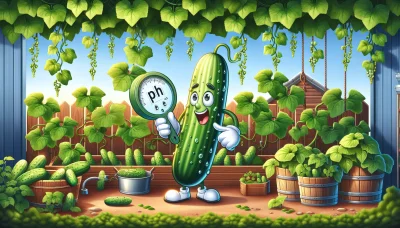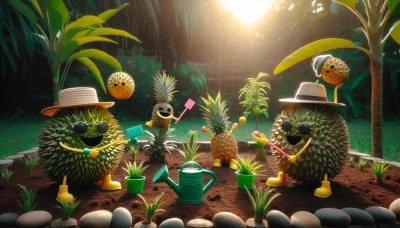Growing strawberries in colorado Quiz
Test Your Knowledge
Question of
Growing Strawberries in Colorado: A Comprehensive Guide
Growing strawberries in Colorado presents a unique set of challenges and rewards due to its high altitude and variable climate. The state's diverse weather conditions, ranging from cold, snowy winters to hot, dry summers, can make strawberry cultivation a challenging endeavor. However, with the right knowledge and preparation, gardening enthusiasts can successfully grow these delicious fruits. This guide aims to provide comprehensive insights into selecting the right strawberry varieties, understanding the ideal planting times, and implementing effective care and maintenance practices to thrive in Colorado's distinctive environment.
Choosing the Right Strawberry Varieties for Colorado
- Fort Laramie: Known for its large, sweet berries, this everbearing variety is extremely hardy and produces fruit from late spring through fall.
- Honeoye: A June-bearing variety that offers a bounty of bright, sweet fruit. It's highly resistant to diseases and adapts well to Colorado's varying conditions.
- Quinault: An everbearing plant that is ideal for container gardening. Quinault strawberries are known for their soft, juicy berries with a rich flavor, producing fruit throughout the summer.
- Albion: This day-neutral variety produces large, firm berries with a consistently sweet flavor. Albion is drought-tolerant and performs well in Colorado's climate, offering a long harvest season.
- Chandler: Popular for its high yield and large, flavorful berries, Chandler thrives in Colorado's spring and fall temperatures. It's a June-bearing variety that does well in both home gardens and commercial settings.
Preparing Your Garden for Strawberries
When it comes to cultivating strawberries in Colorado, preparation is key to ensuring a bountiful harvest. First and foremost, selecting the right location is critical. Strawberries thrive in areas that receive full sunlight for at least six to eight hours a day. They also prefer well-drained, loamy soil to prevent waterlogging, which can lead to root diseases. Before planting, it's essential to prepare the soil by tilling it to a depth of 8 to 12 inches to ensure it's loose and aerated. Incorporating organic matter, such as compost or well-rotted manure, can significantly improve soil structure and fertility. Soil amendments are particularly important in Colorado, where the soil can be more alkaline and less fertile than strawberries prefer. Adjusting the soil's pH to a slightly acidic level, between 5.5 and 6.5, by adding elemental sulfur or peat moss can create an ideal growing environment for strawberries. By carefully preparing your garden with these steps, you'll create the perfect foundation for your strawberry plants to flourish.
Planting and Caring for Your Strawberries
- Choosing the Right Variety: Opt for cold-hardy varieties suitable for Colorado's climate, such as 'Honeoye', 'Quinault', or 'Fort Laramie'.
- Planting Time: Plant strawberries in early spring as soon as the soil is workable. In Colorado, this is typically around late April to early May.
- Spacing: Plant strawberries about 18 inches apart in rows that are 4 feet apart. This allows plants ample room to spread and grow.
- Watering: Provide 1 to 1.5 inches of water per week. It's crucial to maintain consistent moisture, especially during fruit development.
- Fertilizing: Apply a balanced fertilizer at planting time. Afterward, use a high-potassium fertilizer to encourage fruiting without promoting excessive foliage growth.
- Mulching: Use straw or pine needles to mulch around the plants. This helps retain soil moisture, control weeds, and protect roots from temperature extremes.
- Protecting Plants from Pests and Diseases: Regularly inspect plants for signs of pests such as spider mites and aphids. Use floating row covers to protect plants from insects. For diseases like powdery mildew, ensure good air circulation around plants and consider using fungicides recommended for use in Colorado.
- Winter Care: In late fall, cover plants with straw or mulch to protect them from freezing temperatures. Remove the mulch in early spring, once the threat of frost has passed.
Harvesting and Storing Your Strawberries
Harvesting strawberries at the peak of ripeness is crucial for achieving the best flavor and sweetness. The perfect time to pick strawberries is when they are fully red, with no white or green parts, and the berries are plump and firm to the touch. It's best to harvest in the cool of the morning and use them as soon as possible for the freshest taste. When storing strawberries, avoid washing them right away as moisture can lead to quicker spoilage. Instead, store them in the refrigerator in a container lined with paper towels to absorb any excess moisture. For longer preservation, strawberries can be frozen on a baking sheet before transferring to a freezer-safe container, allowing you to enjoy the taste of summer even in the colder months.
Common Challenges in Growing Strawberries in Colorado
| Problem | Symptoms | Prevention Methods | Solutions |
|---|---|---|---|
| Frost | Browning of leaves and blossoms, blackened stems | Use row covers; plant in frost-resistant areas | Remove damaged parts; use water to raise temperature around plants |
| Pests (e.g., spider mites, aphids) | Discoloration of leaves, leaf curl, webs on plants | Introduce beneficial insects; maintain healthy soil | Apply insecticidal soap or neem oil; remove heavily infested leaves |
| Diseases (e.g., powdery mildew, verticillium wilt) | White powdery substance on leaves, wilting, yellowing of leaves | Ensure proper spacing; avoid overhead watering | Apply fungicides; remove and destroy infected plants |












